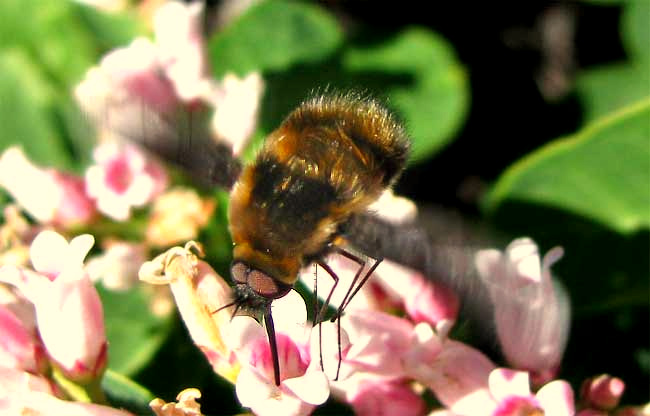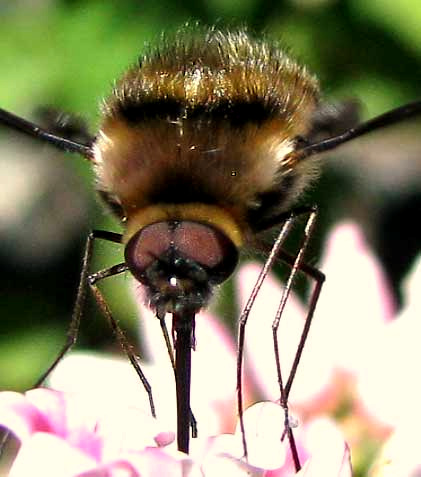Excerpts from Jim Conrad's
Naturalist Newsletter


Bee flies are flies that look like bees. In other words, they're in the Fly Order, Diptera, whose members bear one pair of wings, while bees belong to the Wasp and Bee Order, Hymenoptera, whose members bear two pairs of wings.
However, bee flies definitely look and behave like bees. That's because they're basically defenseless, but it's to their advantage to look like bees capable of stinging a predator. Bee flies buzz in flight like bees, and behave somewhat like them.
For instance, when I'm photographing most insects as they pollinate flowers they tend to gradually move away from me as they visit one flower after another. The bee fly in the picture incessantly moved toward the camera's lens, several times actually flying beneath the camera and sometimes even darting at the lens as if threatening to sting! He was pugnacious, but it was all bluff.
Bee fly larvae are more dangerous, at least to other insects. Female bee flies deposit their eggs in the nests of other insects, or spiders, the victim species depending on the bee fly species. Details vary from species to species but the typical story is that the bee fly's eggs hatch into wormlike larvae who eat the food meant for the nest's original larvae, then the bee fly larvae eat the original larvae themselves! More often than not bee flies parasitize the nests of real bees.